My oldest child, Robbie, wants to be a game inventor when he grows up. He’s invented quite a few games, but the majority of them aren’t really math games. They’re heavy on health and damage stats, power-ups, and battles between different cards…. This year, however, Robbie invented a game that has been fantastic for our math games time, and I’m excited to share it with you today!
You might already be familiar with Bead Trading, game A7.1 in the Math Card Games book. Rachel featured it in one of her blogs. You can read the blog for more details; but essentially, it’s a way to practice bead trading on the second side of the AL Abacus by turning over Basic Number Cards and adding them to a cumulative total. Once you reach 1000, you’re a “Grand Champion”!
Robbie loved this game to the extent that he created his own levels and sub-levels of championship. His sister, however… not so much. She got about ten cards into this game and walked away. I knew she needed a lot more bead trading practice though. I let it slide for a couple weeks. Then one afternoon, Robbie came up with his game. He didn’t intend for it to be used with the abacus, but when he taught me how to play, a lightbulb went on. Hey – this game would be perfect for practice on the second side of the abacus! I showed my daughter how to play it and instantly she was hooked. She begged to play it every day and in the first week we played it about ten times!
There’s a bit of cutting and writing to start, but don’t let that scare you. Once you have your materials ready, it’s simple to play.
The first step is to grab some coloured paper (up here in Canada we use British English and it is “colour”, not “color”) or cardstock and cut out 48 yellow cards, 24 orange cards, 12 red cards, 3 purple cards, and 1 pink card. Yes, it sounds like a lot, but it goes quickly – watch a show, listen to a podcast, or get some little helpers to assist. If you already have coloured index cards, well, you’re just winning!
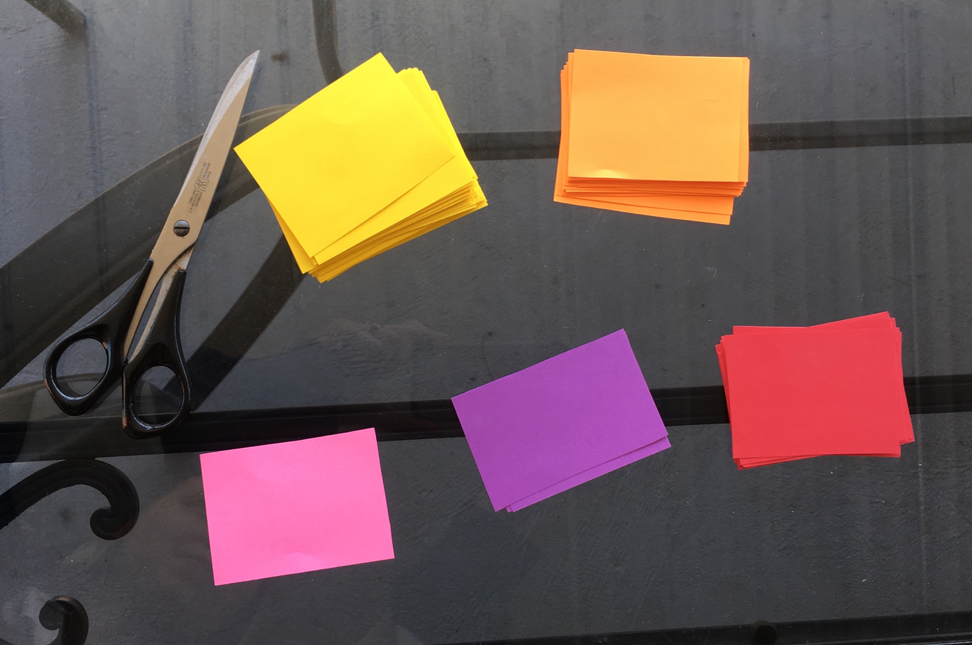
There’s going to be a total of 88 cards, so don’t make your cards too big, otherwise your table may not be large enough to hold them all. Go ahead and guess how we know that?! Anyhow…
Now it’s time for the writing. Start with the yellow cards. On half of the yellow cards, write “orange”. On the other half, write values of either 10, 20, or 30.
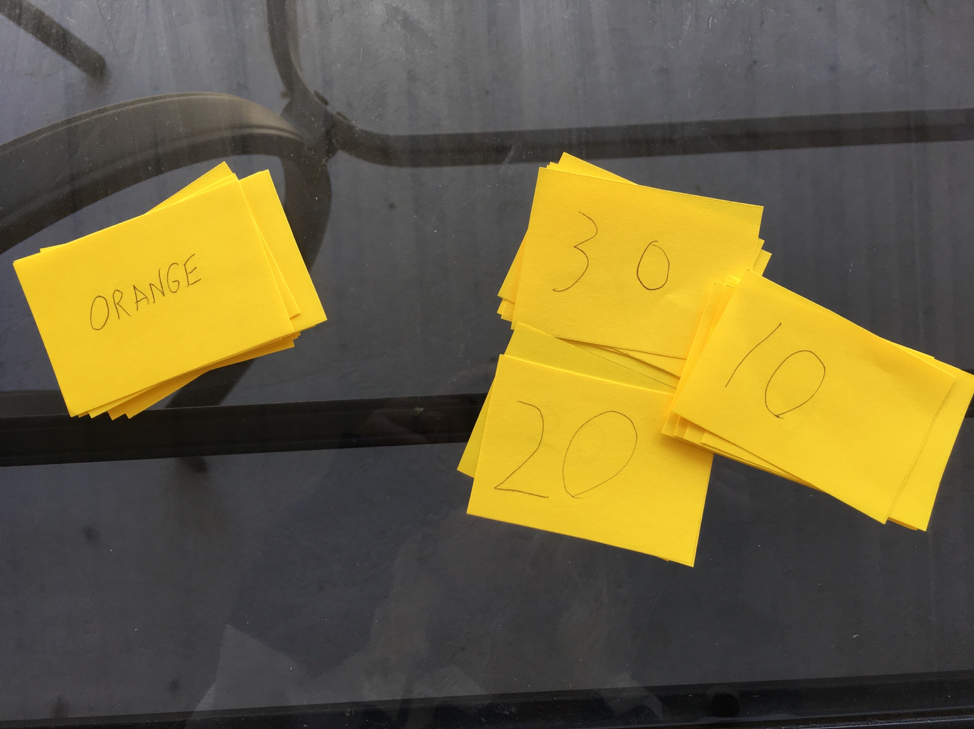
Next, orange cards. On half of those cards, write “red”. On the other half, write values of either 40, 50, or 60.
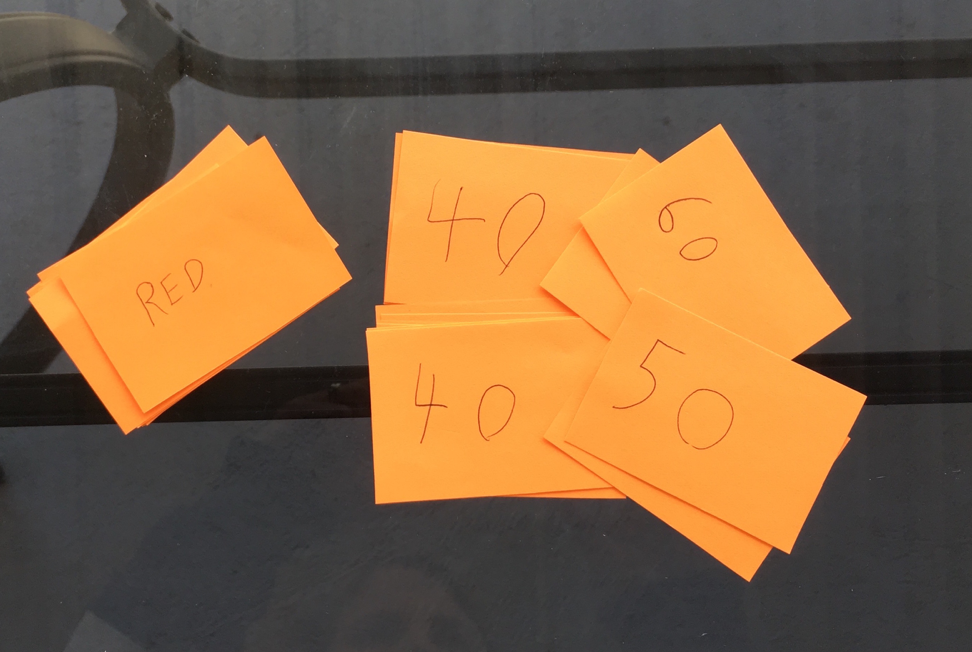
You’re almost there! On three of the red cards, write “purple”. On the remaining nine red cards, write values of either 80, 90, or 100.

On one purple card, write “pink”. On the other two cards, write 150.
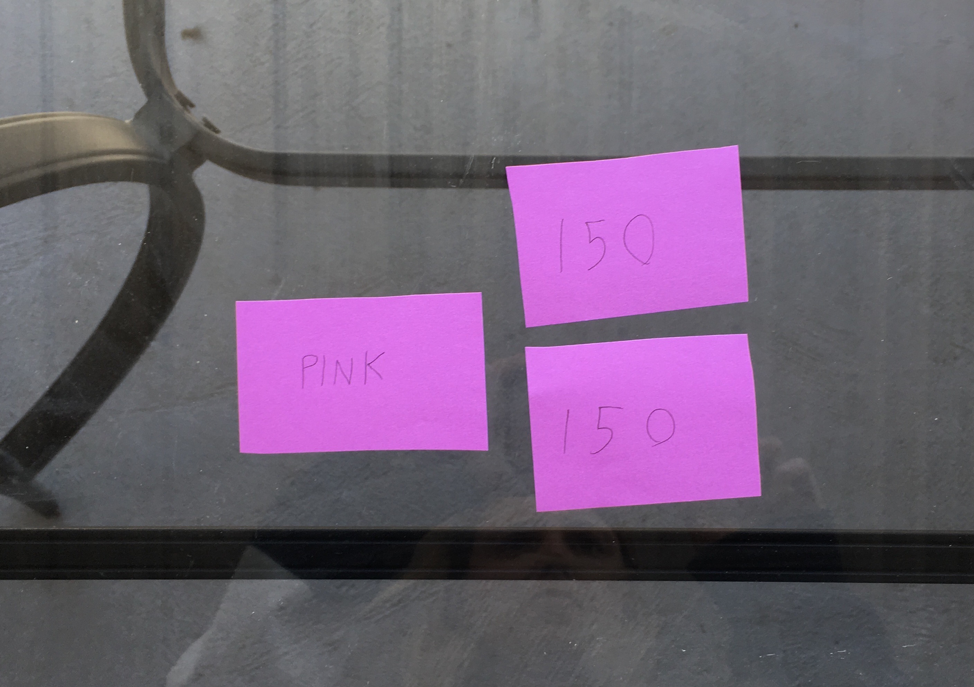
And finally, on the lucky pink card, write 200.
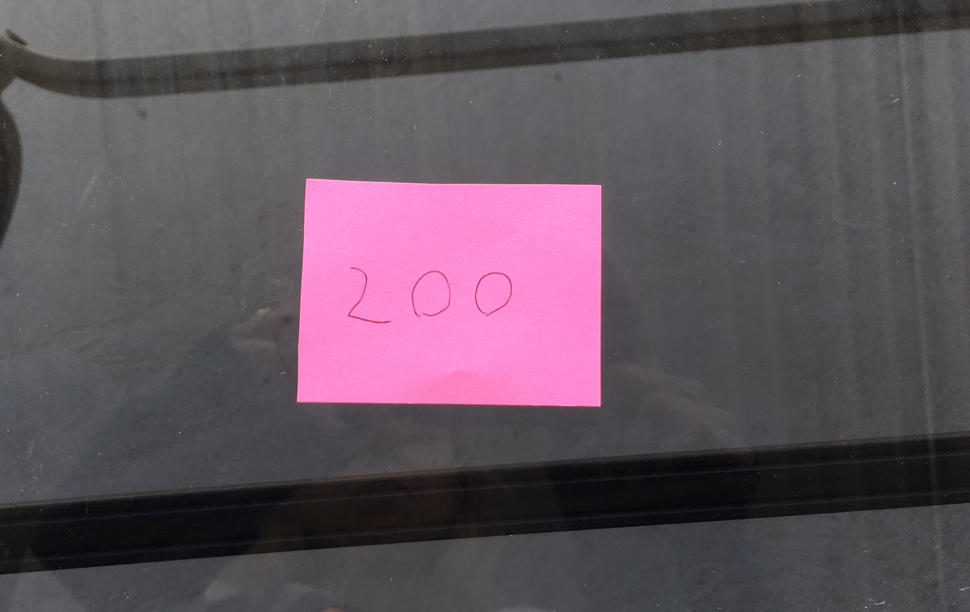
Prep work done! Whew.
Lay all the cards face down, in their colour groups. Grab some abacuses. We’re lucky enough to own three abacuses, but if you don’t have more than one, give the abacus to the child who needs to practice bead trading skills. The other players can use the traditional paper-and-pencil method to keep track of their points.
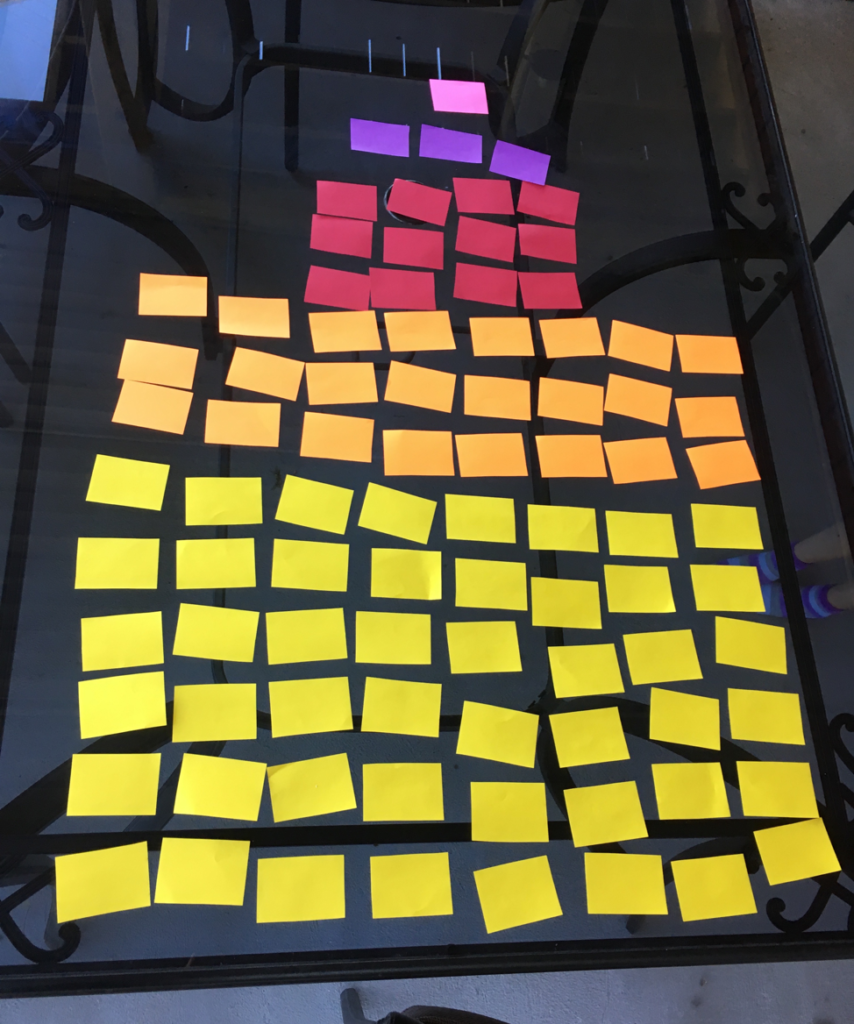
Now you’re ready to play!
The first player begins by selecting a yellow card and turning it over. If it has a point value on it, she enters it on her abacus. Clara goes first…
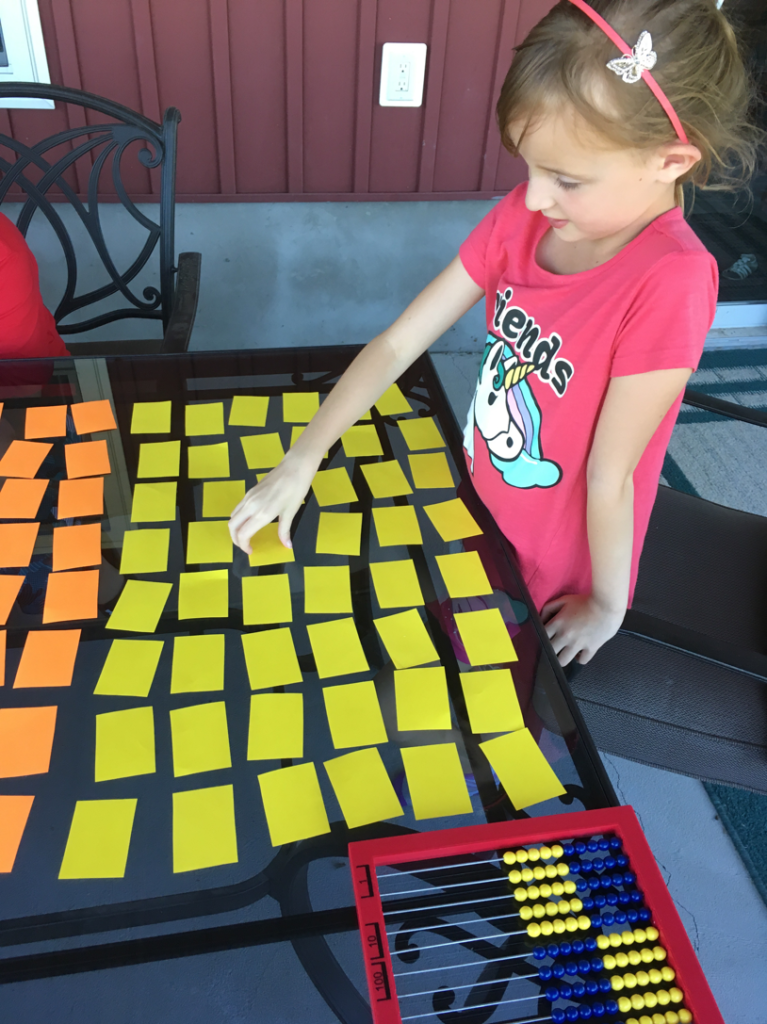
It’s a 30. She enters 3-ten, or 30, on her abacus and sets the card aside.
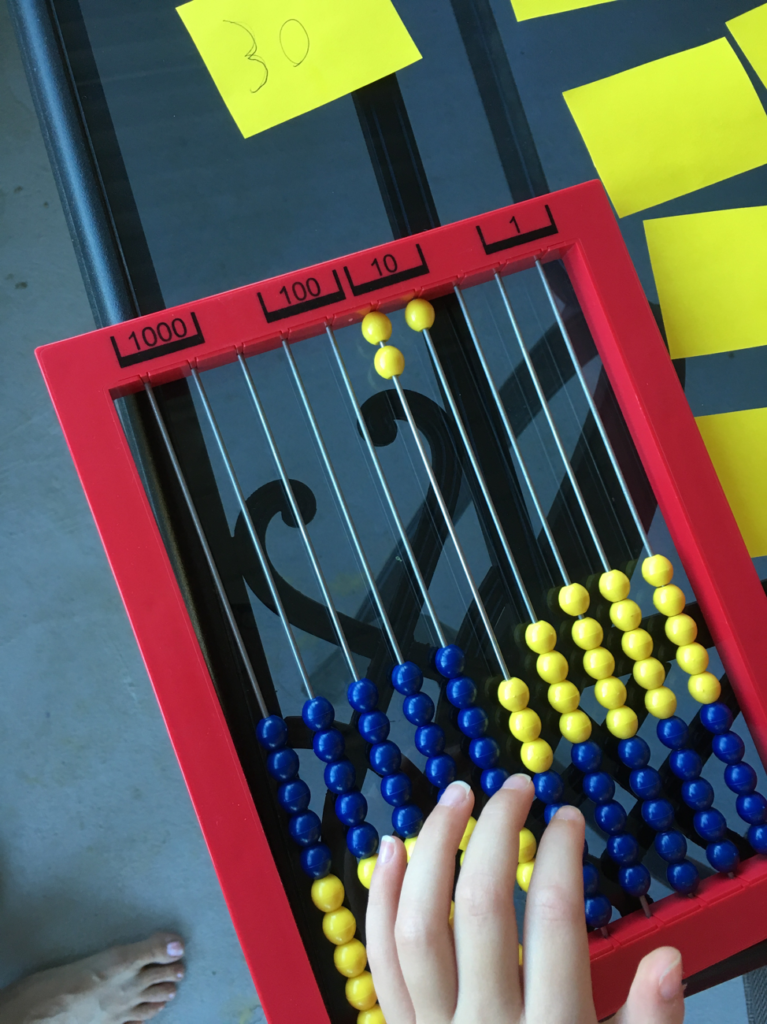
Now it’s Robbie’s turn. He turns over a yellow card. It says “orange”!
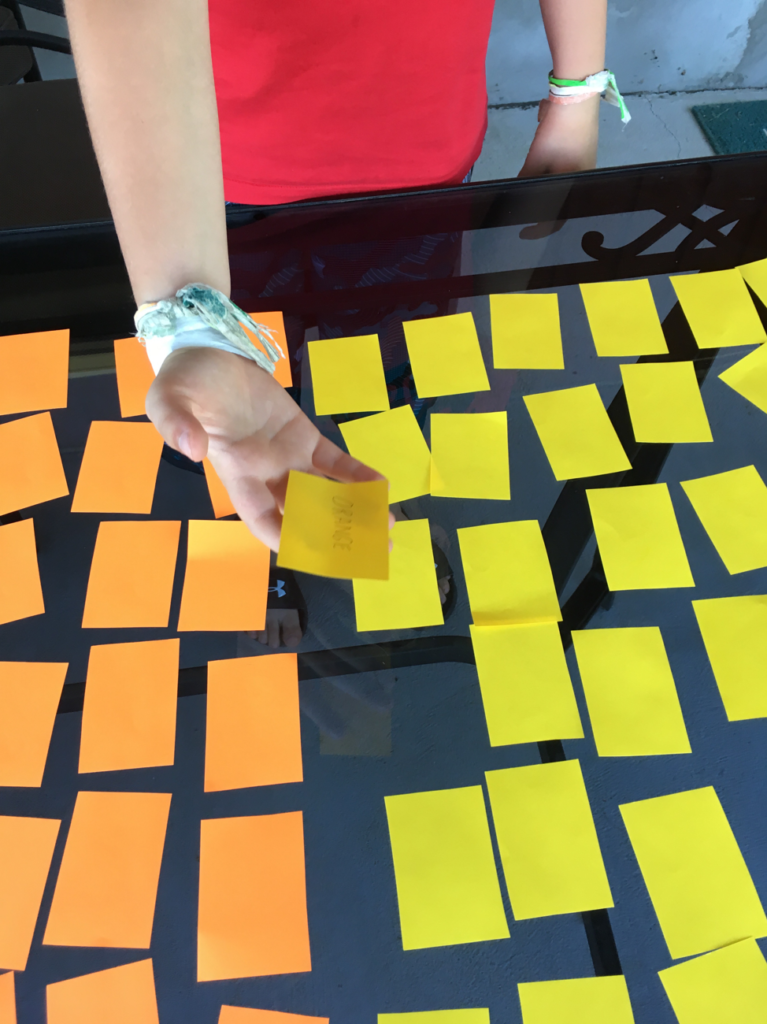
He gets to turn over an orange card now. Lucky him – this one says “red”!
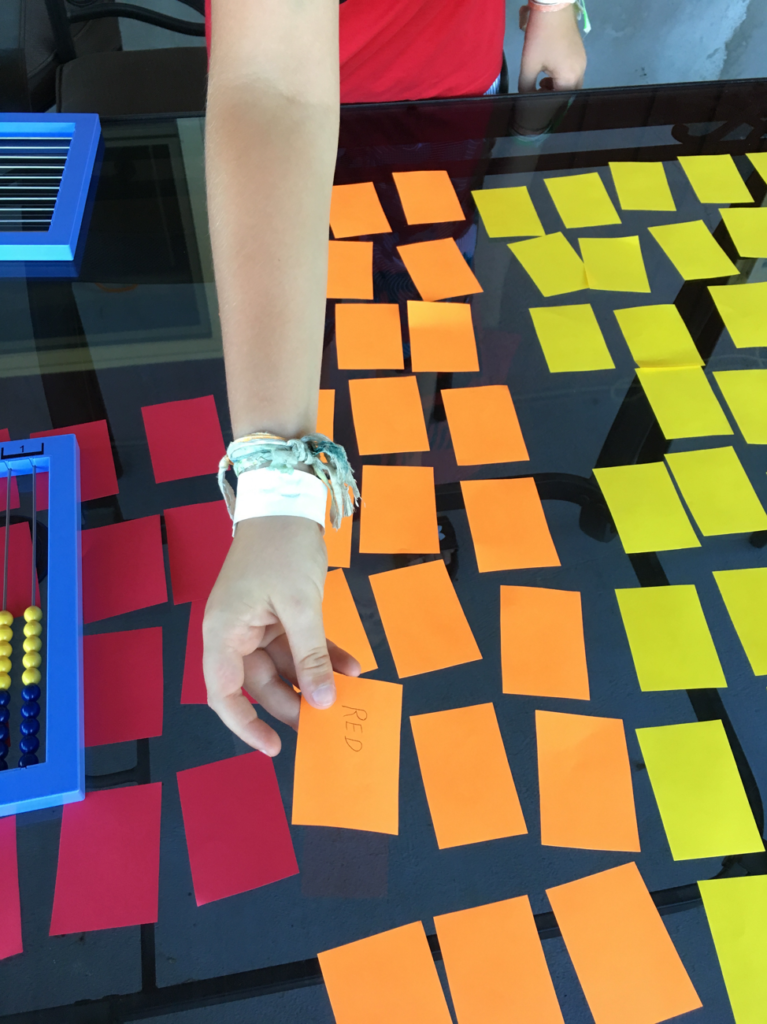
Off to the red cards. He turns a red card and it says 80!
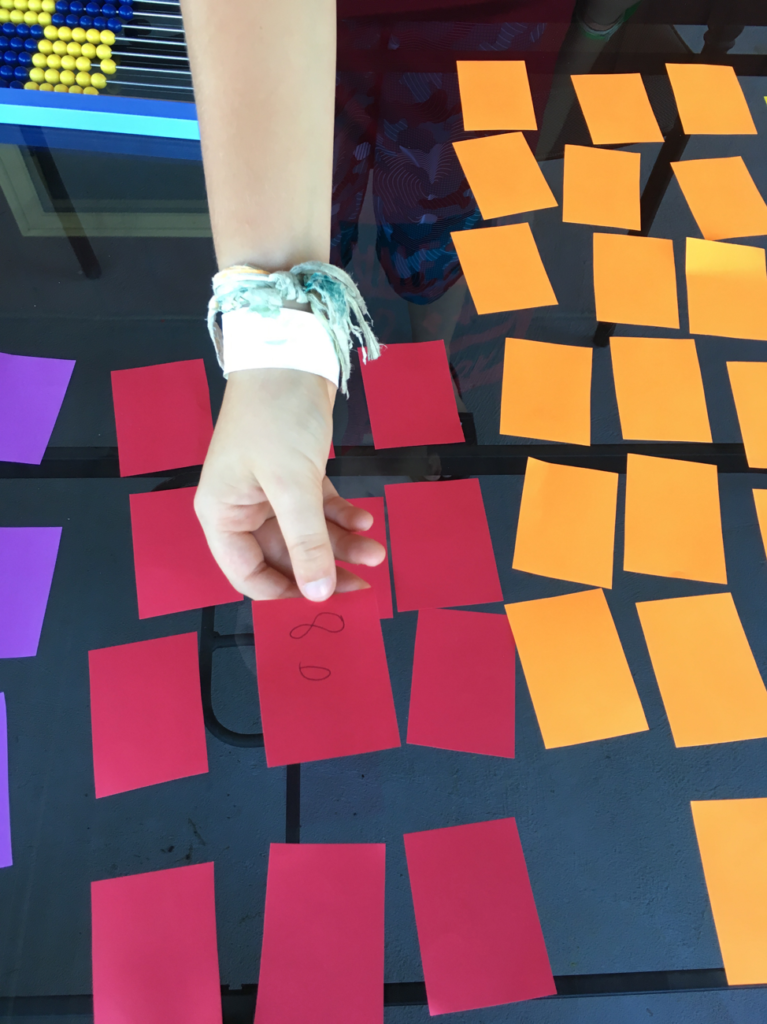
He enters 80 on the abacus and sets the three cards aside.
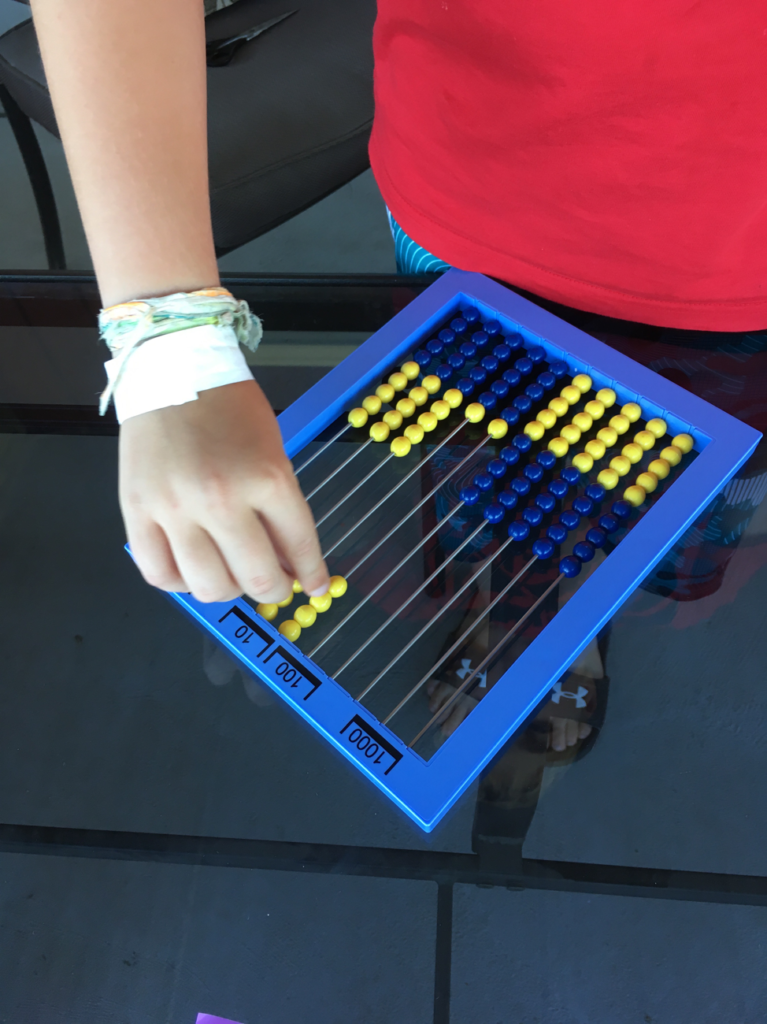
And now it’s my turn; but you should have the gist of it by now. Each player’s turn begins with a yellow card with hopes for as many points as possible. As you go along adding points to your cumulative total, you’ll have to do quite a lot of bead trading. Depending on how many players you play with and how lucky you are, it’s possible to get into the thousands. Of course, everyone is keeping their fingers crossed for the pink card!
That highly anticipated pink-card-moment didn’t come until pretty late in our game. We have a few cards left on the table, that lucky pink card still lying there, along with some children who are resisting the temptation to peek underneath the glass tabletop…
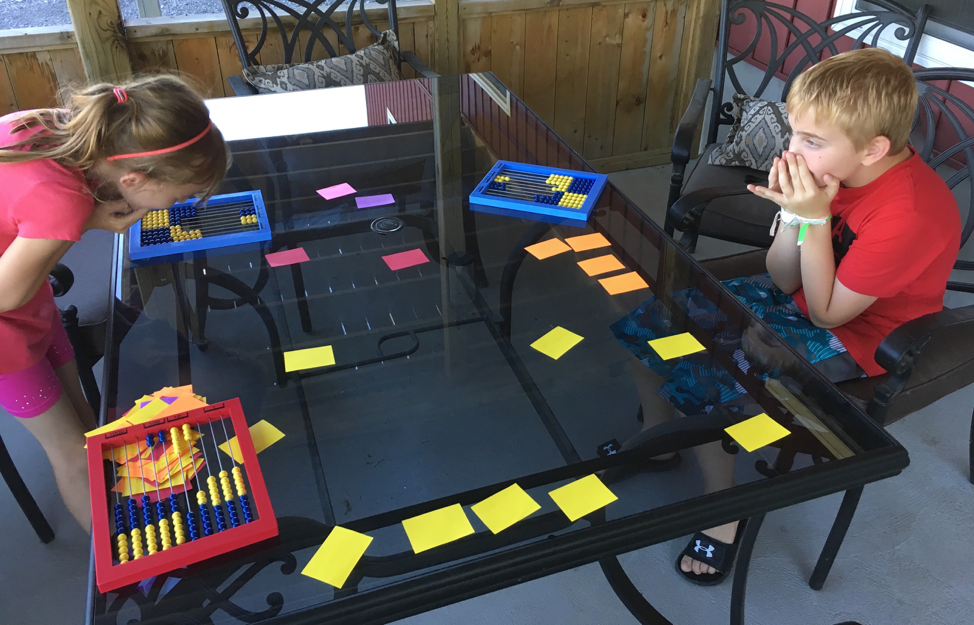
It was just a moment after the picture was taken that it happened. We have a pink card winner, folks!
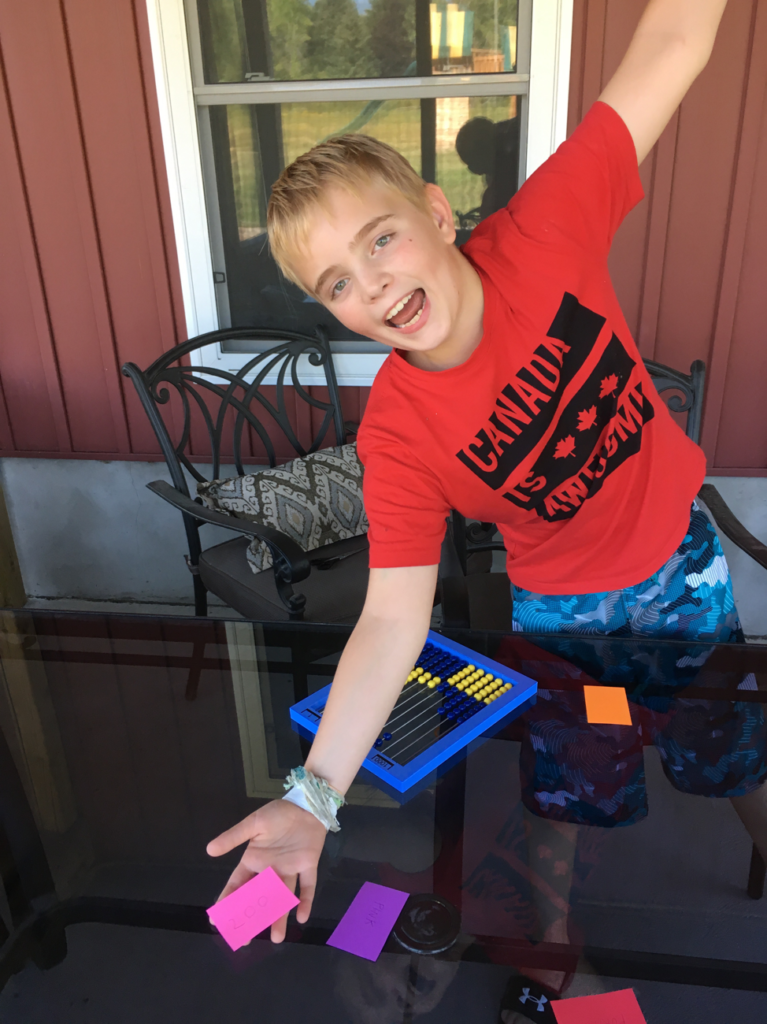
Once all the cards are gone, the game is over, and the winner is the player with the highest points total.
Can you tell who won the game? My abacus is on the left, Clara’s in the middle, and Robbie’s on the right….
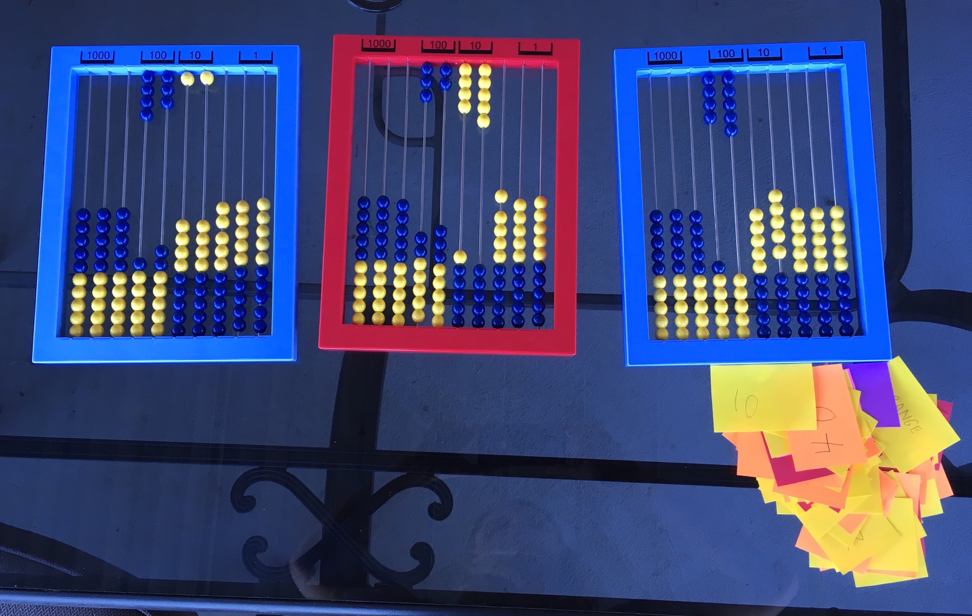
Clara read the totals out loud for us: 720, 590, and 900. Sometimes I have her write the numbers down on pieces of paper or create the numbers using the place value cards just to add a little extra dimension of practice.
There’s not much to this game, but it makes adding up numbers a little more exciting, and it’s easy to customize by changing point values. Your points could be in the 0-10 range if you’d like more single-digit addition practice; or you could go higher and have the cards ranging from 100 to 1,000 if you want more practice trading in the thousands. Have fun with this game and let us know how it goes in your household!

I love it, Beth! Robbie is super creative, and it’s awesome that the game has benefited everyone for math practice. I love your writing, by the way 🙂